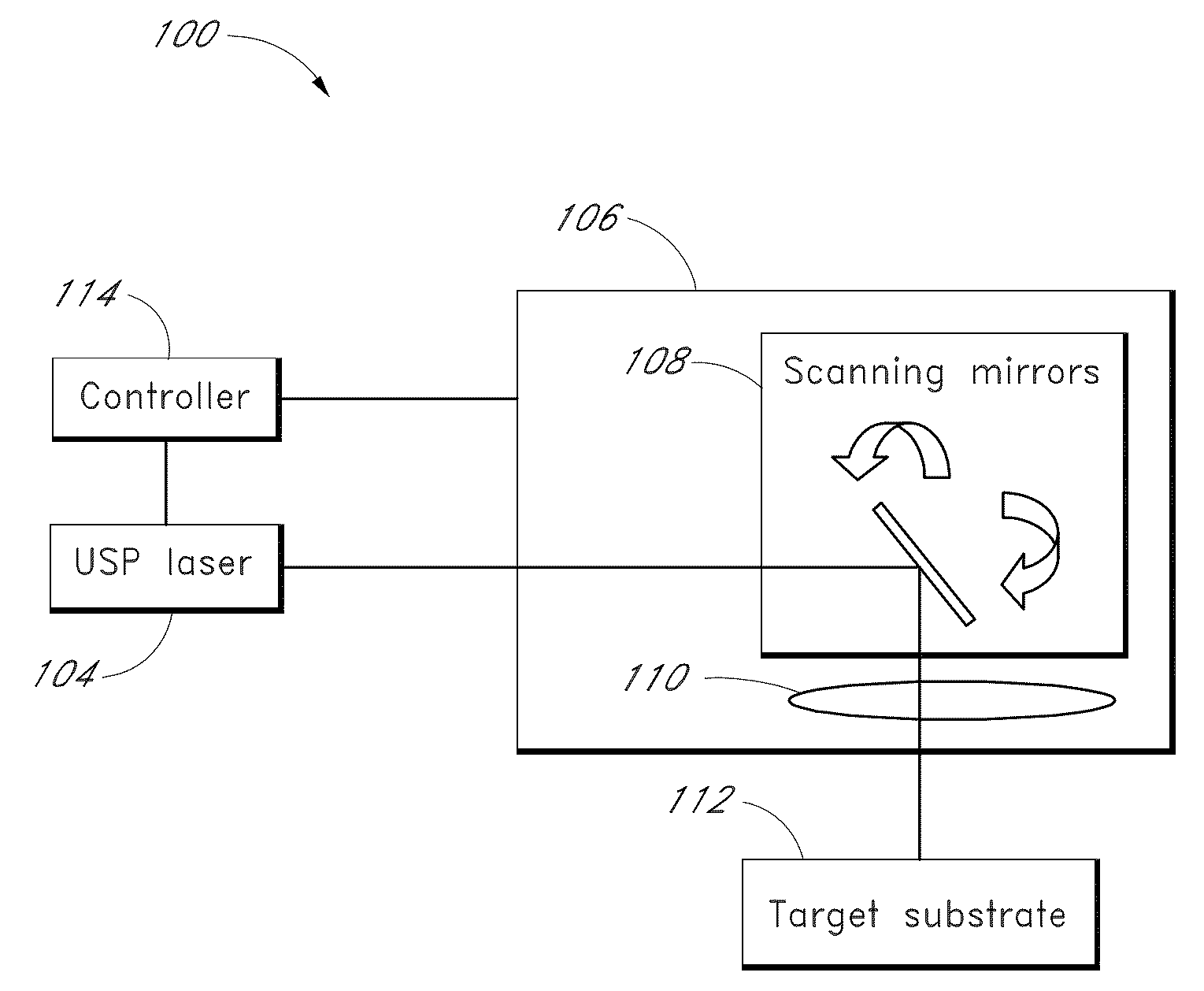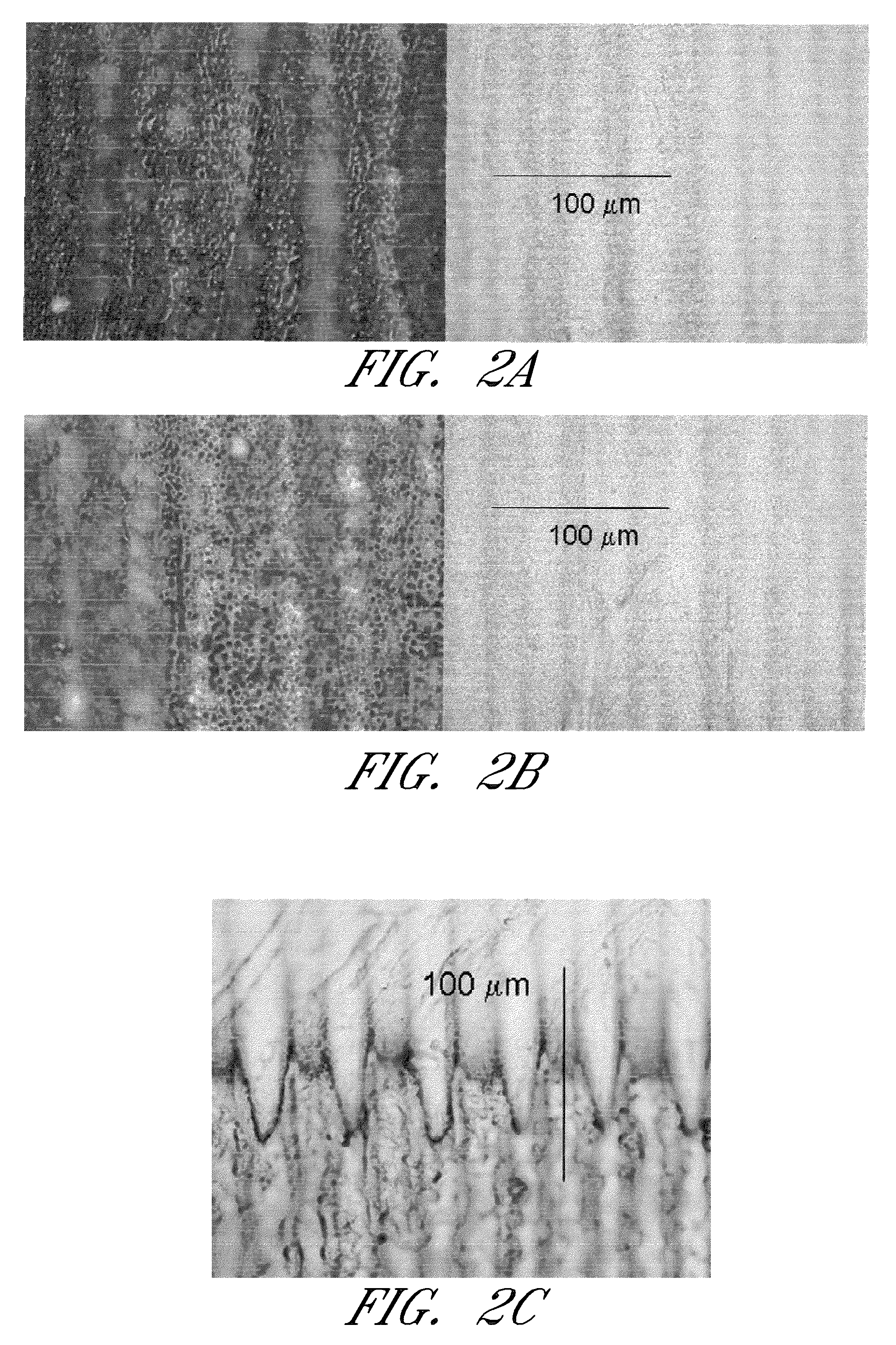Ultrashort laser micro-texture printing
a laser microtexture and ultrashort technology, applied in the field of ultrashort laser microtexture printing, can solve the problems of limited utility of solid substrates such as metals, limited use of paper substrates, and limited use of conventional laser engraving, and achieve the effects of tighter focusing of incident laser beams, fast optical shutters, and rapid modulation of high-power femtosecond pulse trains
- Summary
- Abstract
- Description
- Claims
- Application Information
AI Technical Summary
Benefits of technology
Problems solved by technology
Method used
Image
Examples
Embodiment Construction
[0159]FIG. 1 schematically illustrates a first embodiment of a system 100 capable of use for image formation of a target substrate 112 via surface micro-structuring with ultrafast pulse trains. The system 100 comprises a laser system 104 and a scanning system 106. In this embodiment, the scanning system 106 includes two galvanometric scanning mirrors 108 capable of two-dimensional scanning. In other embodiments, a different number and / or type of scanning mirrors may be used. In some embodiments, the scanning may be one-dimensional. The scanning system 106 may also include focusing optics 110 such as, for example, an integrated F-theta lens capable of producing a substantially flat field of view at the target substrate 112. For example, in some embodiments, the F-theta lens is configured to produce a 20 μm laser focus spot with a substantially flat field of view over an area of about 8000 mm2. The scanning system 106 (and / or other system components) may be controlled by a controller ...
PUM
| Property | Measurement | Unit |
|---|---|---|
| energy | aaaaa | aaaaa |
| energy | aaaaa | aaaaa |
| wavelengths | aaaaa | aaaaa |
Abstract
Description
Claims
Application Information
 Login to View More
Login to View More - R&D
- Intellectual Property
- Life Sciences
- Materials
- Tech Scout
- Unparalleled Data Quality
- Higher Quality Content
- 60% Fewer Hallucinations
Browse by: Latest US Patents, China's latest patents, Technical Efficacy Thesaurus, Application Domain, Technology Topic, Popular Technical Reports.
© 2025 PatSnap. All rights reserved.Legal|Privacy policy|Modern Slavery Act Transparency Statement|Sitemap|About US| Contact US: help@patsnap.com



